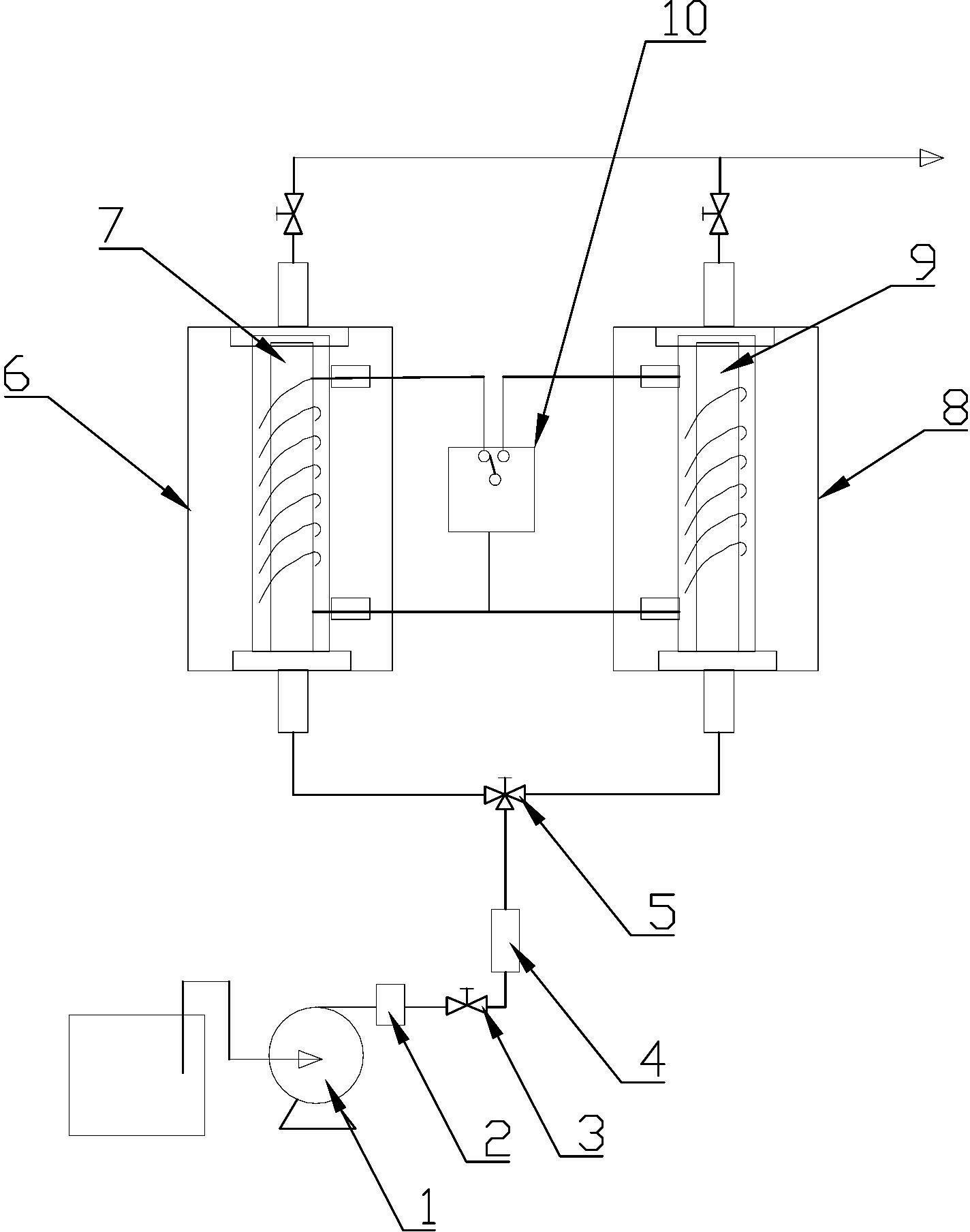Removal method for organic pollutants based on microporous mineral absorption and coupling as well as microwave degradation
一种有机污染物、微孔矿物的技术,应用在水污染物、吸附水/污水处理、化学仪器和方法等方向,能够解决孔道结构破坏、比表面积降低、微波穿透性差等问题,达到孔道结构规整、吸附容量大、吸附效率高的效果
- Summary
- Abstract
- Description
- Claims
- Application Information
AI Technical Summary
Problems solved by technology
Method used
Image
Examples
Embodiment 1
[0039] Atrazine is currently one of the most widely used and most important herbicides in the world. It has a stable structure, strong water solubility, is difficult to degrade, and is very slowly mineralized by microorganisms. It poses a serious threat to the water ecological environment and human drinking water. threaten. In this example, 10 ppm of atrazine aqueous solution is used as the target treatment substance, and dealuminated HY zeolite is used as the adsorbent. Since the molecular diameter of atrazine is 0.54 nm, HY zeolite has a three-dimensional pore structure, large specific surface area, and hydrophobic Strong, regular pore structure, pore size of 0.74-1.2nm, so atrazine molecules can be selectively adsorbed into the pores and bound, which is conducive to microwave-induced degradation. The atrazine aqueous solution is delivered to the first adsorption column 7 at a certain flow rate through the water pump 1, the filter device 2, the main control valve 3 and the m...
Embodiment 2
[0041] The specific embodiment of the present invention is illustrated with the removal of typical chlorophenol compound 2,4-dichlorophenol in water body. Chlorophenol compound is widely used in pesticide, pharmaceutical industry and industry, and is important in water and soil environment. pollutants. Due to the stable structure of chlorophenols, traditional physical, biochemical or chemical oxidation methods generally have a long cycle and low degradation efficiency. Therefore, effective treatment of phenol-containing wastewater has become a topic of general concern in environmental protection, printing and dyeing, papermaking and other industries. In this example, 20 ppm of 2,4-dichlorophenol aqueous solution is used as the target treatment, and dealuminated HY zeolite is used as the adsorbent. The molecular diameter of 2,4-dichlorophenol is equivalent to the pore size of the dealuminated HY zeolite, which can It is selectively adsorbed into the pores of zeolite and bound, ...
PUM
| Property | Measurement | Unit |
|---|---|---|
| aperture size | aaaaa | aaaaa |
Abstract
Description
Claims
Application Information
 Login to View More
Login to View More - R&D
- Intellectual Property
- Life Sciences
- Materials
- Tech Scout
- Unparalleled Data Quality
- Higher Quality Content
- 60% Fewer Hallucinations
Browse by: Latest US Patents, China's latest patents, Technical Efficacy Thesaurus, Application Domain, Technology Topic, Popular Technical Reports.
© 2025 PatSnap. All rights reserved.Legal|Privacy policy|Modern Slavery Act Transparency Statement|Sitemap|About US| Contact US: help@patsnap.com


